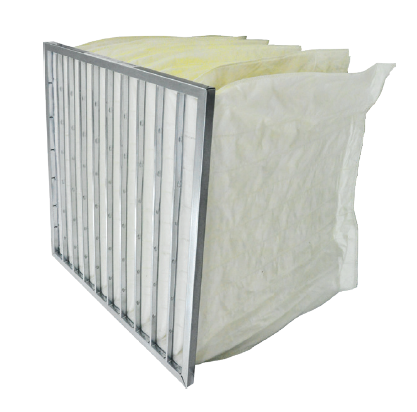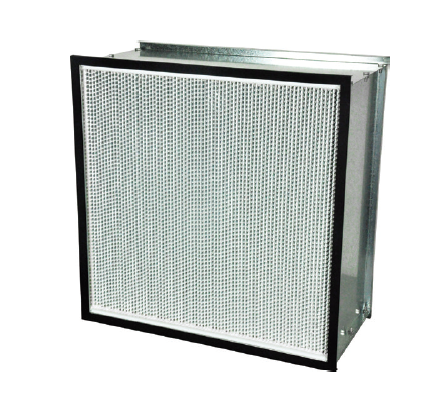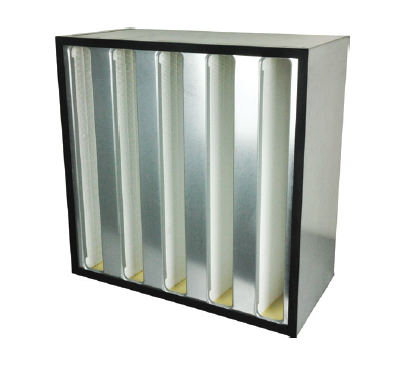Combating Haze in Singapore: Technology and Health Advisory
Back to List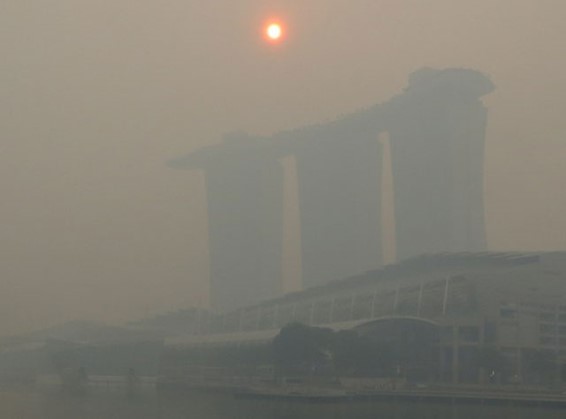
Eerie morning scene at Marina Bay Sands casino resort on 21 June 2013. Thick smoke haze from massive fires in Sumatra engulfed Singapore, leading to record-level pollution.
The hot season is here, and Singapore is expected to be affected by El Nino, resulting in below-average rainfall and higher temperatures. The Meteorological Service Singapore (MSS) is forecasting the climatic and conditions. These drier and warmer conditions create favourable conditions for peatland and vegetation fires, particularly in fire-prone areas. As the dry weather begins in June 2023, the number of hotspots is expected to increase. Prevailing winds from the southeast to southwest may carry smoke haze from neighbouring Indonesia towards Singapore.
Haze is an atmospheric occurrence in which the sky’s clarity is obscured by dust, smoke, and dry particles in the atmosphere, becomes a concern during these conditions. Particulate Matter (PM) 2.5, which refers to particles of size 2.5 microns and smaller, is the primary pollutant associated with haze.
The size of these particles directly impacts their potential to cause health issues. Inhaling these particles can have detrimental effects on both the lungs and heart. Scientific studies have linked exposure to particle pollution to various health problems, including premature death in individuals with heart or lung disease, nonfatal heart attacks, irregular heartbeat, aggravated asthma, decreased lung function, and respiratory symptoms such as airway irritation, coughing, or difficulty breathing.
Haze in Singapore
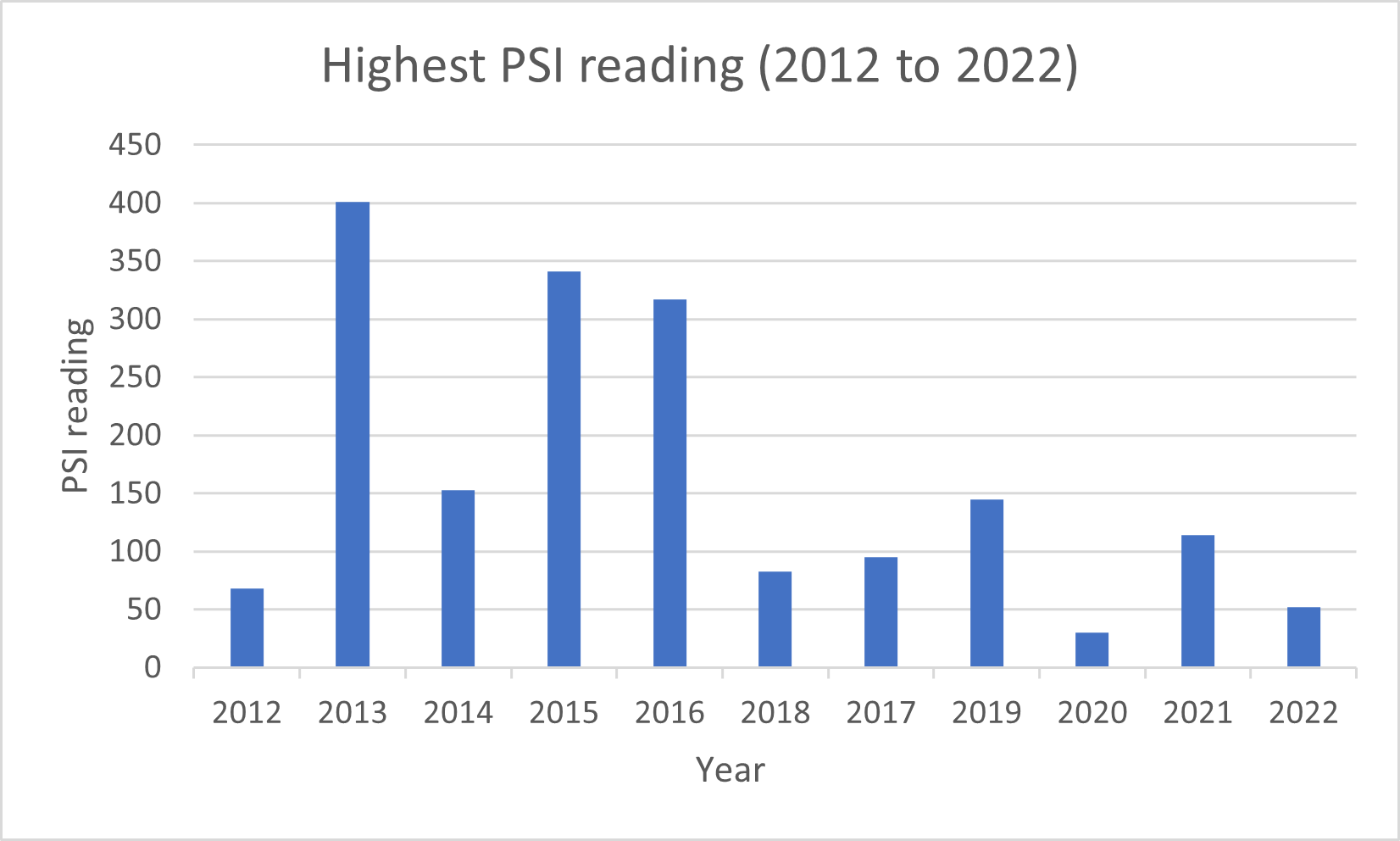
PSI Readings in Singapore 2012 to 2022
The bar chart above illustrates the highest Pollutants Standard Index (PSI) reading for each year from 2012 to 2022 in Singapore. The highest PSI reading recorded was in 2013 with a PSI reading of 401 and the lowest PSI reading recorded was in 2020 with a PSI reading of 30. Haze in Singapore usually occur during June to September and become more severe during the dry months of February to April, therefore these months have the highest probability of higher PSI reading recorded in Singapore.
WHAT CAN WE DO TO PROTECT OURSELVES AGAINST THE HAZE?
- Health Advisory: The Ministry of Health has established a Health advisory for the public on haze.
- Building Advisory: For indoor space in buildings, Building and Construction Authority (BCA) issued its updated guidance note on improving ventilation and indoor air quality in buildings for a healthy indoor environment. Section 2.3 of the Guidance note addresses the mitigation measures that can be adopted by Facilities personnel for buildings to be resilient against the haze. Filters are recommended to be an effective means against dust, mould spores and airborne pollutants.
- Daikin Solutions against Haze.
- As per BCA recommendations, filters are an effective measure to mitigate the effects of haze. Whether it is the high-efficiency filters (MERV 14 or above) or our ceiling cassette MERV 8 filters, Daikin provides a wide and comprehensive filter range to fight against the haze. Find out more about Daikin air filters here.
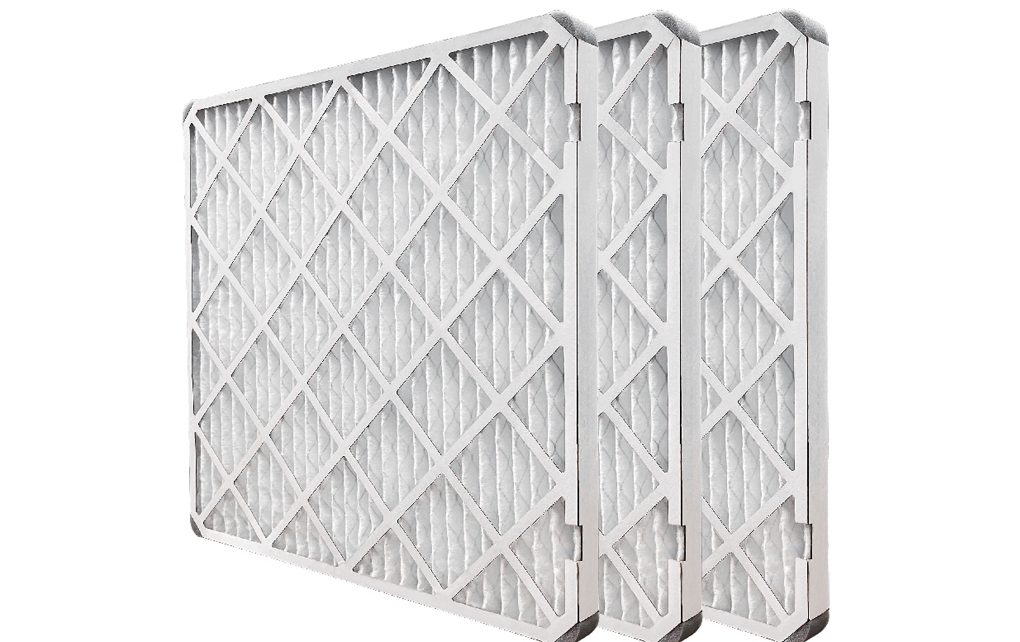
- Daikin Air Purifier, with its patented Streamer technology and high-efficiency electrostatic HEPA filtration has also been tested and certified to be effective in reducing PM2.5 level and hence effective against haze.
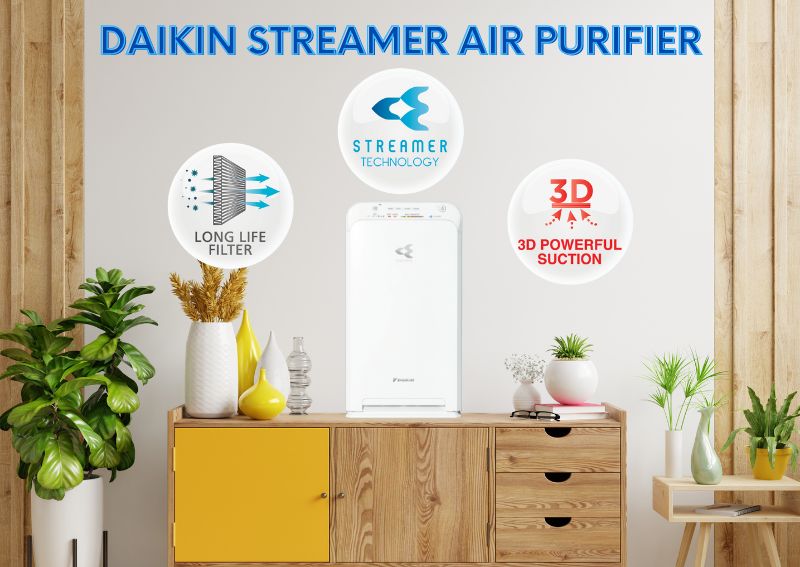
- As per BCA recommendations, filters are an effective measure to mitigate the effects of haze. Whether it is the high-efficiency filters (MERV 14 or above) or our ceiling cassette MERV 8 filters, Daikin provides a wide and comprehensive filter range to fight against the haze. Find out more about Daikin air filters here.
To minimize exposure to smoke particles from haze, other controls that residents can protect themselves are by shutting windows and doors. This action helps prevent haze particles from entering homes and ensures that the air breathe indoors remains healthy and clean. More household controls can be found here.
-
Read more
Daikin’s R32 Refrigerant Can Lower Your Electricity Consumption
-
Read more
Poised For The Rise Of Green Consumerism – Meeting Consumer’s New Expectations
-
Read more
Things you never dreamed that your air-con can do
-
Read more
Importance of proper Air Con Servicing
-
Read more
What is Smart Home?

